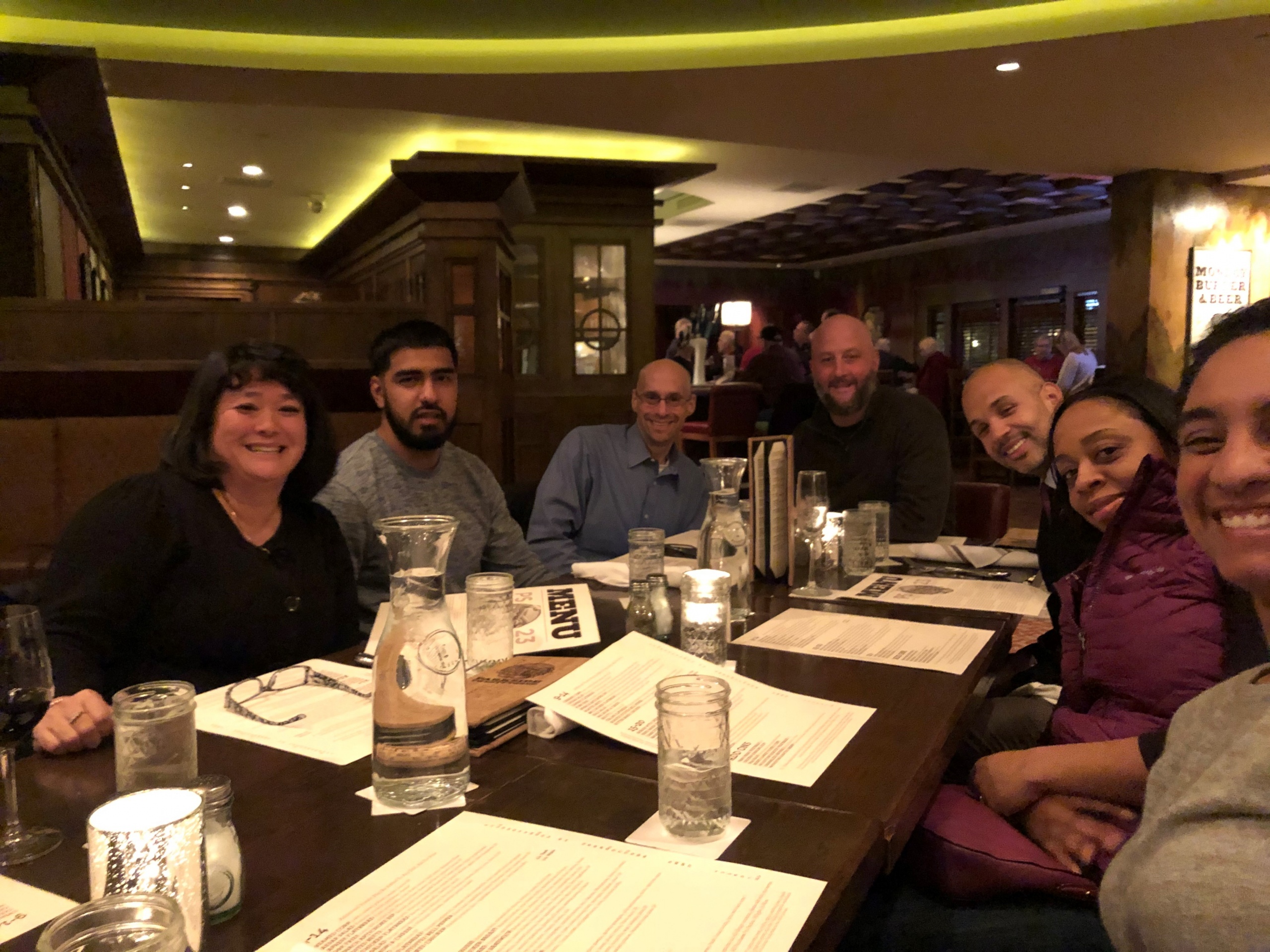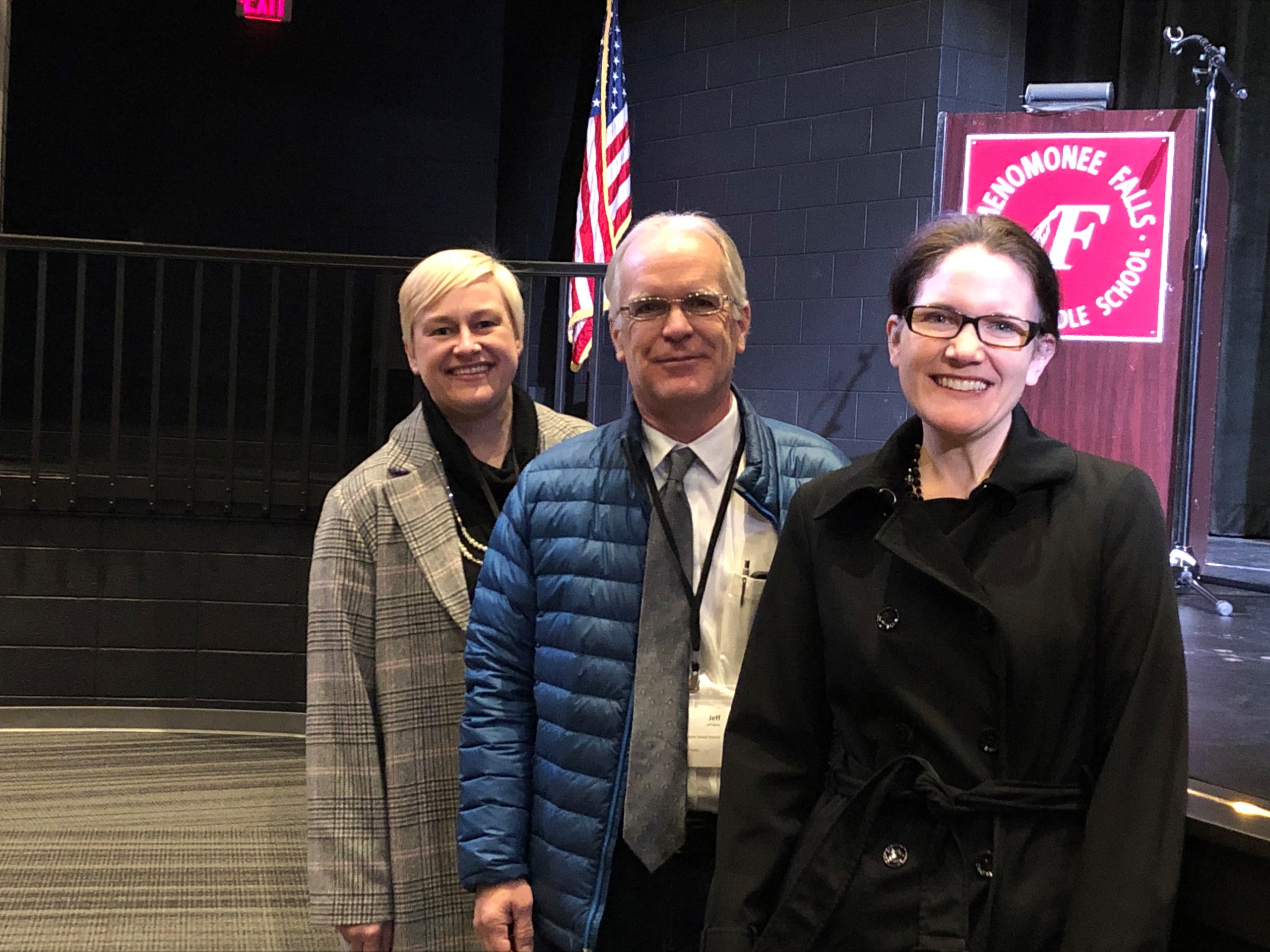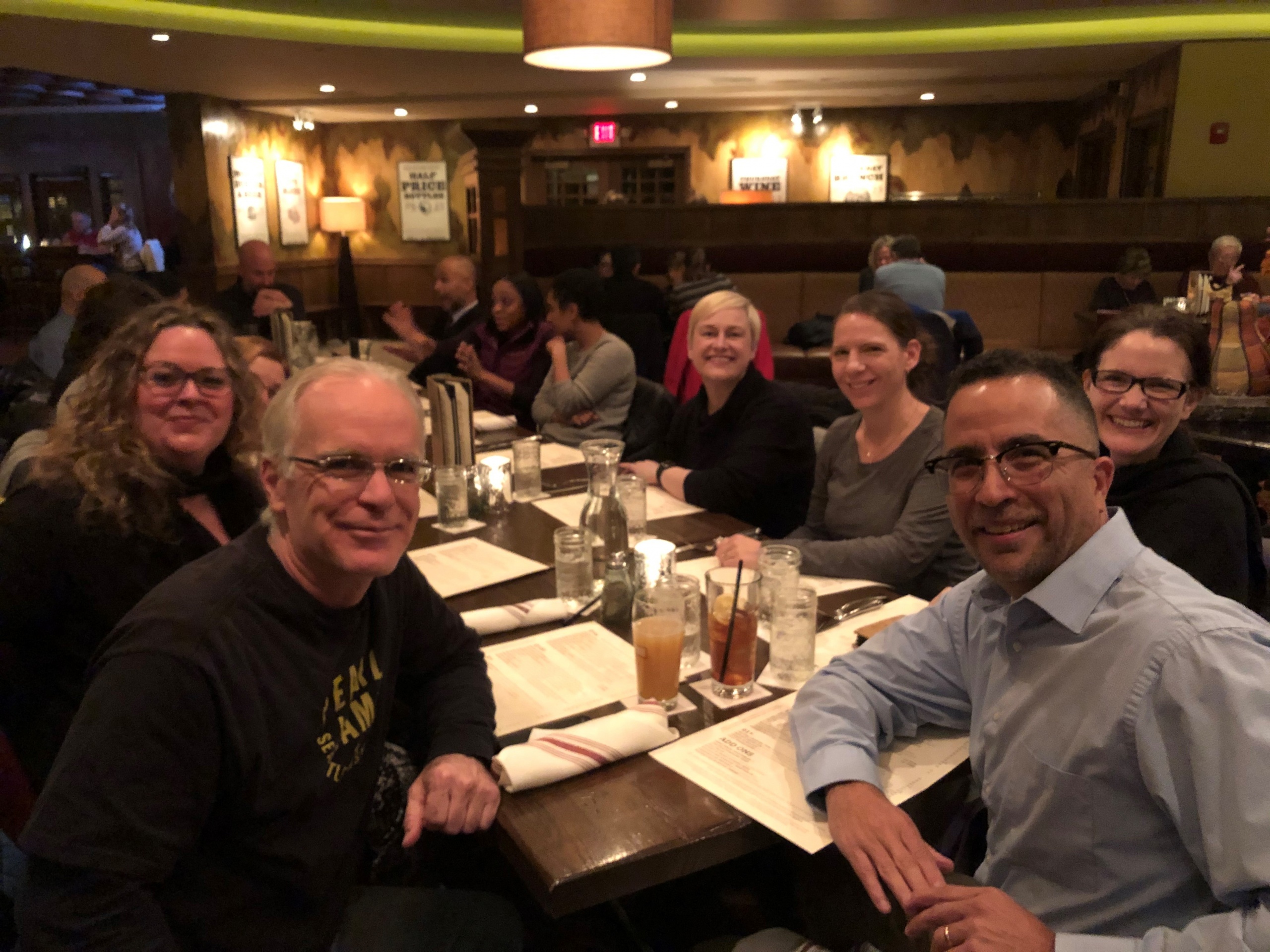
Renton School District delegation members: (from left) Dr. Shannon Harvey, Ryan Quigtar, Jon Stadler, Alfred Deblasio, Supt. Damien Pattenaude, Naceshia Holmes (in back), Ebony Pattenaude.

Tukwila School District delegation members: Heather Wallendahl, Jeff Baker, Heather Newman.

Tukwila School District delegation at dinner: Jeff Baker, Kimberly Goodman, Heather Wallendahl, Kristin Boline, Heather Newman, Flip Herndon.
Continuous improvement—a cyclical process of setting goals, identifying the root causes, testing changes, and adopting improvement—is key to the work of Local Improvement Networks. Currently, there are two Local Improvement Networks in the Road Map Project region—Renton and Tukwila. These initiatives bring together district leaders, school teams, and community partners to improve early learning and elementary outcomes in math and social emotional learning.
A Road Map Project region delegation of school district leaders and educators this past fall attended a symposium in Menomonee Falls, Wisconsin—where the school district has been implementing continuous improvement strategies since 2014.
What did participants from Renton and Tukwila learn from a school district with a drastically different student population? What were Road Map Project districts, where the majority of enrollment is students of color, hoping to learn from a district that is comprised of 12 percent students of color?
Some answers are in these differences. Because one of the most crucial aspects of the Local Improvement Network model is the focus on different local contexts, each one is unique. Likewise, continuous improvement science focuses on contextual change, rather than a universal approach. The delegation came back home from Menomonee Falls with many insights and hopes—and found that even between neighbors like Tukwila and Renton, their learnings were distinctive to their own contexts.
Tukwila School District
For Tukwila, whose Local Improvement Network has just launched in the fall, the trip was for learning about continuous improvement and how to implement it throughout the district. The Tukwila team went in with questions about school buy-in and hopes about making connections. They were able to learn from Renton (where student demographics and geographies are similar, but district size is different) and from Menomonee Falls (where district size is similar, but student demographics and geographies are very different). Here are a few of their takeaways:
Dr. Flip Herndon, Tukwila School District Superintendent:
“It was great to see a district be cohesive from K-12 and have staff onboard. I used to think it would be almost impossible to implement system-wide improvement where all staff are truly bought in. Now I know it is possible with perseverance and proper support from the board level down. I had a chance to speak with many staff from Menomonee Falls about the process of continuous improvement. Clearly, their demographics are very different from ours. However, their persistence has paid off.”
Kristine Boline, Tukwila School District Math Interventionist:
“I think there is a large demographic difference in the students we serve in comparison to the student demographics of Menomonee Falls. It will be good to collaborate with our cross-district delegation to help think about what we’ve learned at this symposium and how we can relate it back to our students and community needs.”
Tracy Russell, Tukwila School District School Board Director:
“On the surface level, I learned that it is difficult to compare my own school district with [Menomonee Falls] in certain ways because there are significant differences that are beyond my control (demographics, lack of unions, state funding models, mill levy rates). Once I was able to set those differences aside, I was able to see what similarities we have: passionate educators, families who crave and deserve true engagement, students who learn best when they are empowered to be part of their education.”
Renton School District
On the other hand, the Renton Local Improvement Network has been working since fall 2018. This meant their participants were able to gather information that could be used by more specific roles in more specific methods. Here are a few of their learnings:
Jon Stadler, Renton School District Chief of Curriculum, Instruction & Assessment:
“[From Menomonee Falls,] I learned some of the tools and practices used to continually review and look at ‘problems of practice.’ From [Tukwila], I learned where they are in the process and what they are doing or looking to try in the future. I look forward to finding scorecards that work for us and utilizing them to measure and monitor progress as we identify goals in the future.”
Naceshia Holmes, Renton School District, Campbell Hill Elementary Principal:
“One of my biggest takeaways was using one of the six principles of improvement to frame student learning. I plan to apply my experience by (1) Prioritizing professional learning around mindsets to foster growth, problem solving, and the relentless pursuit of excellence. And (2) establishing a routine of progress check cycles during units to monitor student learning around smaller goals to promote reflection and adjustment to practice.”
Dr. Shannon Harvey, Renton School District Deputy Superintendent of Schools:
“I am thinking about how we help leaders make time to think about continuous improvement. And more specifically how I am making time to think/plan for improvement. One of the sessions I was in talked about 80/20. If you spend 20 percent of your time thinking and planning around improvement, it will change your work by 80 percent.”
In strengthening systems for students, there is no one-size-fits-all approach or neat checklist of improvements. That’s why Local Improvement Networks are so focused on their own local contexts. Each network learned that continuous improvement strategies are valuable because of their adaptability and cyclicity. Continuous improvement is possible across multiple scales, arenas, and structures. It can be done at the district level down to the classroom level. Most importantly, the process of working collectively to build equitable education systems is—and will continue to be—messy, challenging, and absolutely worthwhile.
Posted in: Early Learning & Elementary Success